Related Research Articles

Republika Srpska is one of the two entities of Bosnia and Herzegovina, the other being the Federation of Bosnia and Herzegovina. It is located in the northern and eastern parts of the country and had a population of 1,228,423 according to the 2013 census. The largest city and administrative center is Banja Luka, situated on the Vrbas River.

Dragan Čović is a Bosnian Croat politician who served as the 4th Croat member of the Presidency of Bosnia and Herzegovina from 2002 to 2005 and from 2014 to 2018. He is the current president of the Croatian Democratic Union and has been serving as a member of the national House of Peoples since 2019, having previously served from 2011 to 2014.

Treskavica is a mountain range in Bosnia and Herzegovina, situated in Trnovo municipality just south of city of Sarajevo. Mala Ćaba peak at 2088 m, which makes Treskavica the tallest of all the mountains circling Sarajevo, and only some 300 m shorter than the tallest mountain in the country. On clear days with good weather, climbers can see far into the distance, up to Montenegro and the Adriatic Sea.
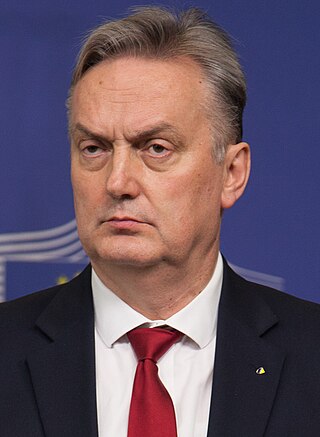
Zlatko Lagumdžija is a Bosnian diplomat and politician serving as Permanent Representative of Bosnia and Herzegovina to the United Nations since July 2023. He previously served as Minister of Foreign Affairs from 2001 to 2002 and from 2012 to 2015. Lagumdžija was also Chairman of the Council of Ministers of Bosnia and Herzegovina from 2001 to 2002. He was president of the Social Democratic Party from 1997 to 2014.

The University of Sarajevo is a public university located in Sarajevo, Bosnia and Herzegovina. It is the largest and oldest university in the country, tracing its initial origins to 1537 as an Islamic madrasa.

The National Museum of Bosnia and Herzegovina is located in central Sarajevo, the capital of Bosnia and Herzegovina.
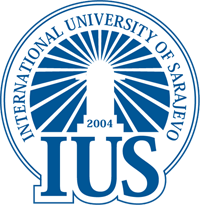
The International University of Sarajevo (IUS) is a private university located in the capital city Sarajevo, Bosnia and Herzegovina. The university was established by the Foundation for the Development of Education in 2004–2005. IUS is open to students from all over the world, and the language of instruction and communication is English. It offers four year education according to Bologna system. IUS has 1650 students from 55 countries and faculty members from 20 countries performing academic and research activities in various disciplines of Science, Engineering, Arts and Social Sciences. The first generation of 32 IUS graduates received their diplomas on June 26, 2009. IUS offers many types of scholarships, especially for students from Bosnia and Herzegovina. IUS has both modern and large campus for the region.
Marko Vego was a Bosnian and Yugoslav archaeologist, epigrapher and historian.
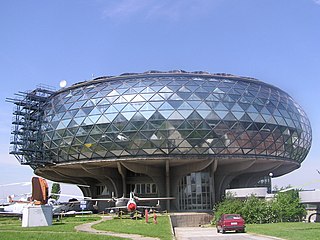
Ivan Štraus was a Bosnian architect.
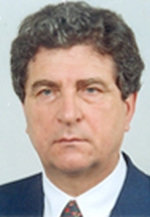
Hasan Muratović was a Bosnian politician, entrepreneur and professor who served as the last Prime Minister of the Republic of Bosnia and Herzegovina from 1996 to 1997. He also served as Minister without portfolio in all of the governments of the Republic of Bosnia and Herzegovina throughout the Bosnian War. Muratović was the first post-war Minister of Foreign Trade and Economic Relations, serving from 1997 to 1999. He was a member of the Party of Democratic Action.

Mehmed Handžić was a Bosnian Islamic scholar, theologian and politician. Handžić was the leader of the Islamic revivalist movement in Bosnia and the founder of the religious association El-Hidaje. He was one of the authors of the Resolution of Sarajevo Muslims and the chairman of the Committee of National Salvation.

Slavo Kukić was a Bosnian sociologist and academic who was a professor and PhD in Marxist sociology. He was a member of the Academy of Sciences and Arts of Bosnia and Herzegovina.

Vranica is a mountain range in the Dinaric Alps of central Bosnia and Herzegovina, located between the town of Gornji Vakuf in the west and the town of Fojnica in the east, within the territory of the Federation. The highest peak is Nadkrstac at 2,110 metres (6,920 ft). Geologically, the Vranica range is part of the Dinaric Alps and formed largely of secondary and tertiary sedimentary rock, mostly limestone. Notable peaks are Nadkrstac, Locika, Rosinj and Scit. Thick shrubs of Pinus Mugo replace mixed forest—mostly beech—above 1,400 m (4,600 ft). The typical karst characteristics of the nearby Herzegovina mountains is relatively absent in Vranica, which has relatively abundant water sources. Streams that source from these mountains are the Dragača in the east, the Vrbas in the west.
Enver Redžić was a Bosnian historian, cultural observer, professor, and founder of the publishing company Svjetlost. During World War II, he was a member of anti-fascist groups ZAVNOBiH and AVNOJ.

The National and University Library of Bosnia and Herzegovina (NUL) (Bosnian, Croatian and Serbian: Nacionalna i univerzitetska biblioteka Bosne i Hercegovine / Национална и универзитетска библиотека Босне и Херцеговине) is the national library of Bosnia and Herzegovina based in Sarajevo. During the war in Bosnia and Herzegovina, during the siege of Sarajevo, in the night from 25th to 26 August 1992, members of the Army of the Republika Srpska shelled Vijećnica where the library was located at that time. As a result, many of its archival and library holdings were destroyed.

The Commission to Preserve National Monuments of Bosnia and Herzegovina, abbr. KONS, is Bosnia and Herzegovina commission (agency) which declares and registers national heritage monuments/sites, including natural/urban/architectural assembles, immovable and movable heritage of historical and cultural importance to Bosnia and Herzegovina, as an institution at state level. The sites of exclusively natural heritage are not subject of Annex 8 and the KONS.
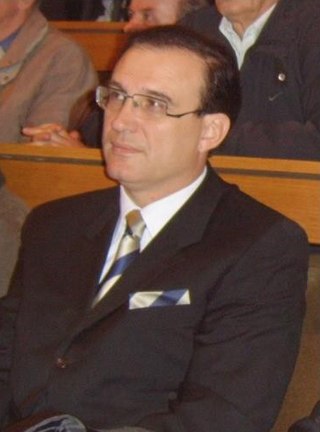
Adamir Jerković is a Bosnian-Herzegovinian academic, a doctor of sociology and history, essayist, and publicist with an extensive experience in the field of journalism. He is the author of numerous political commentaries. He served as an advisor to the first President of Bosnia and Herzegovina Alija Izetbegović. He held important political, state and economic posts, including those of the Secretary of the Municipal Conference of the Socialist Alliance of Working People of Zenica, Advisor to the Government of the Federation of Bosnia and Herzegovina, Assistant to the General Director of BH Pošte, Director of the Archives of the Federation of Bosnia and Herzegovina, President of the Administrative Board of the Poštanska /Post Bank, and performed many other duties. He is the Secretary General of the Bosniak Academy of Sciences and Arts. He is the author of numerous books, essays, and articles.

Nenad Kecmanović is a Bosnian Serb political scientist, sociologist, political analyst, publicist and former politician who served as the Serb member of the Presidency of the Republic of Bosnia and Herzegovina from June to July 1992. Resigning just 19 days after taking office, he is the shortest serving Presidency member overall.
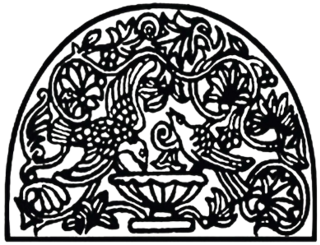
Museum of Literature and Theater Arts of Bosnia and Herzegovina is a literary art museum in Sarajevo, Bosnia and Herzegovina. It was established under the name Museum of Literature of Bosnia and Herzegovina in 1961 on the idea of then curator of literary collections in the Museum of Sarajevo, writer Razija Handžić, the future director. In 1970, the Theater Department was founded and added to the Museum of Literature.
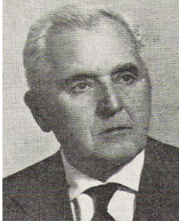
Anto Babić was a Bosnian historian, the first dean of the Faculty of Philosophy in Sarajevo, a member of the Academy of Sciences of Bosnia and Herzegovina, SANU, MANU. He was the founder of the Department of History at the Faculty of Philosophy in Sarajevo. He is deemed a doyen of Bosnian and Yugoslav historiography.
References
- 1 2 3 Hadžiselimović R.; Kalabušić S., eds. (2016). Prvih 56 godina - Monografija PMF UNSA. Sarajevo: Prirodno-matematički fakultet Sarajevo. ISBN 978-9958-592-84-3.
- 1 2 3 Stanojević B., ed. (1991). "Budućnost ne čeka, već se planira i stvara". Informator Pokreta „Nauku mladima“. Posebno izdanje (2): 2–10.
- ↑ Šćekić Rajko (2005): Pokret „Nauku mladima“ – Savez mladih istraživača BiH, opština Zavidovići i Žepče (za period 1966. - 1992. godine). DOO „Kula“, Šamac.
